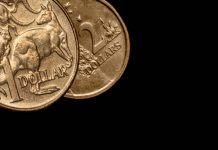In focus today
In the US, today’s main data focus will be on the March PCE. Consensus expects both headline and core PCE inflation to remain steady at 0.3% m/m after mixed signals from March CPI and PPI reports. After yesterday’s GDP release, we got the quarterly PCE print as well, showing increased price pressures in Q1 (details under what happened yesterday). In the afternoon, University of Michigan’s revised April consumer sentiment survey will be released, the preliminary data showed a worrying uptick in inflation expectations.
In the euro area, we look out for data on monetary aggregates and credit growth. We look for signs that the credit data gives further signs of a bottoming out of the credit cycle.
In Norway, we get retail sales from March. After some signs of stabilisation over the autumn of last year, Norwegian retail sales has continued to trend downwards since November. Although real wage growth is about to become positive, this is still counteracted by higher mortgage rates weakening purchasing power. Hence, we expect that retail sales fell by 0.3% in March but emphasise that the March estimates are extremely uncertain due to Easter, which makes seasonal adjustment challenging.
Economic and market news
What happened overnight
In Japan, as widely expected, the Bank of Japan (BoJ) kept monetary policy unchanged at a policy meeting concluding this morning. This meeting follows the March decision to hike the overnight rate out of negative territory in March and exit yield curve control. Unlike at the March meeting, the policy decision this morning was taken unanimously with BoJ revealing new forecasts for the fiscal year 2026. The BoJ expects core inflation of 2.1% by FY 2026, signalling confidence in the longevity of inflation. We see this as a clear message that the BoJ expects to hike the overnight rate target again.
Hours before the decision, Tokyo inflation data slid significantly to 1.6% in April from 2.4% (2.2% expected). The capital data is usually a reliable indicator for the countrywide figures and thus, this must be a concern for the BoJ. The full price effect from the solid spring wage hikes has yet to play out, though. The market has reacted by trading USD/JPY a bit higher to the 156-level this morning, which likely first and foremost reflects the lack of concrete action on the latest JPY depreciation than the rate decision itself.
We expect the BoJ to hike one more time this year, especially if the JPY remains weak. We look for the July meeting by which the final wage tally will also shed more light on the SME segment, which has not seen much wage growth in recent years.
What happened yesterday
In the US, we received the first Q1 GDP print. GDP surprised to the downside at 1.6% y/y SA AR (cons: 2.4%) but more importantly for markets quarterly core PCE prices surprised markets considerably to the top side rising to 3.7% y/y (cons: 3.4%) thereby driving a considerable sell-off in US fixed income.
Real consumption growth eased from Q4, but this was purely driven by lower goods consumption. Services demand actually picked up on a q/q basis. Net exports and public investment also seemed to explain the downside surprise. On the side of private investments, residential investments picked up and non-residential growth also held up. Overall, the details did not seem too weak even if the headline GDP growth number was below expectations. Combined with services price inflation accelerating (in line with signals from CPI), the EUR/USD ended the day higher despite higher treasury yields. The dollar strengthened slightly overnight.
Two of the Big Tech companies, Alphabet and Microsoft, both beat earnings forecasts and sent their respective stocks higher after the US close. Alphabet announced their first ever dividend, which helped their stock rise as well.
In the euro area, ECB’s Panetta, a well-known dove, said that the ECB should cut rates in small progressive steps to monitor the inflation situation, and allow them to stop cutting, at no cost if upside shocks to inflation would materialise. He also said that he feared monetary policy being too tight, such that ECB would need ultra-low rates later. ECB’s Schnabel said that ECB has a bumpy last mile back to inflation target, as service inflation seems to prove persistent, staying above 4% in 2024 until now. We continue to see the June rate cut as close to a done deal and expect three rate cuts of 25bp in 2024.
In Turkey, the central bank kept its main interest rate at 50% in line with consensus forecast, pausing its aggressive hiking cycle for now. The central bank has been fighting inflation rates above 60% since last June, when interest rate was at 8.5%. It paused in February but surprised markets again with a large 500bp hike in March. Now, the CBRT argued lagged effects of past tightening are still at play, and hence a pause was warranted, but they remain “highly attentive to inflation risks”.
Yesterday’s market movements
Equities: Global equities were lower yesterday with macro and micro challenging investors and making it yet another rollercoaster day. At the end, most sectors were lower with communication services massively underperforming on weak earnings while energy and materials outperformed, and we saw stagflationary macro data. Some of these rotations could very well revert today based on the afterhours earnings results yesterday and toda’’s macro calendar. In the US yesterday Dow -1.0%, S&P 500 -0.5%, Nasdaq -0.6% and Russell 2000 -0.7%. Asian markets are mixed this morning while both European and US futures are higher.
FI: The sell-off in the global bond markets continued yesterday on the back of slower US growth and higher US inflation raising speculation regarding the”“stagflatio”” scenario. The US GDP data for Q1 was lower than expected as growth in Q1 was only 1.6% q/q, while the core-PCE inflation rose 3.7% y/y. The curve flattened from the short end as 2Y US Treasury yield is back at the 5% level, as the market continue to price out rate cuts from the Federal Reserve. 10Y US Treasuries is heading towards 4.75%.
FX: The USD soared along rising yields initially on the above-expectations Q1 inflation report but gave back most of its gains towards the end of the session. EUR/USD closed the day flat, whereas USD/Scandies edged slightly higher. The BoJ did little to support the yen at their monetary policy meeting and USD/JPY ventured to new highs above 156.












